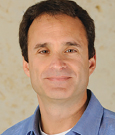Memorial Sloan Kettering Cancer Center (MSKCC) has named three investigators as recipients of this year’s Paul Marks Prize for Cancer Research. The award recognizes promising investigators aged 45 or younger for their efforts in advancing cancer research.
The winners are Bradley E. Bernstein, MD, PhD, of Massachusetts General Hospital; Howard Y. Chang, MD, PhD, of Stanford University; and Daniel Durocher, PhD, of the Lunenfeld-Tanenbaum Research Institute. Each will receive an award of $50,000 and speak about his research at a scientific symposium on December 3, 2015.
The award was created to honor Paul Marks, MD, President Emeritus of MSKCC, for his contributions as a scientist, teacher, and leader during the 19 years he led the organization.
“The Marks Prize was established to recognize the young scientists whose work is improving the understanding of cancer across many different fields in biological research,” said Craig B. Thompson, MD, MSKCC President and CEO. “Because mentoring young talent was so important to Dr. Marks, the MSKCC Board felt this prize would be a fitting tribute to him.”
Since it was first presented in 2001, the biennial prize has recognized 25 young scientists and has awarded more than $1 million.
Bradley E. Bernstein, MD, PhD
Dr. Bernstein is a Professor of Pathology at Massachusetts General Hospital and Harvard Medical School and an Institute Member of the Broad Institute of MIT and Harvard. He earned his medical degree and a doctorate in biochemistry from the University of Washington School of Medicine.
Dr. Bernstein’s research is focused on epigenetics. Specifically, his laboratory studies how the protein scaffold called chromatin packages long strands of DNA in the nucleus of each cell and how this packaging influences both normal development and cancer.
His discoveries have implications for understanding many types of cancer—brain tumors and leukemia, in particular.
One of Dr. Bernstein’s goals is to translate the laboratory tools he’s developed into diagnostics that characterize a patient’s tumor at the molecular level. “The idea is to ensure that patients receive a drug regimen that eliminates all of the different types of cells in their tumor,” Dr. Bernstein said.
Howard Y. Chang, MD, PhD
Dr. Chang is a Professor of Dermatology at Stanford University and a faculty member of its Cancer Biology and Epithelial Biology Programs. He is also Director of the Center for Personal Dynamic Regulomes. He earned his doctorate degree in biology from the Massachusetts Institute of Technology and his medical degree from Harvard Medical School.
His laboratory studies how cells know where they’re located in the body. In his recent work, Dr. Chang discovered that genetic material called long noncoding RNAs (lncRNAs) helps cells sense where they are. These lncRNAs are part of what is sometimes called the “dark matter” of the genome—the 98% of genetic material that does not encode for proteins.
One of the first lncRNAs he discovered is called HOTAIR, which he found could be used to predict whether breast cancer will spread. “If a woman’s breast cancer has high levels of HOTAIR, she is two to three times more likely to die of the disease,” Dr. Chang said. Many lncRNAs are now known to be intimately involved in many types of cancer, and the U.S. Food and Drug Administration has approved diagnostic tests to measure lncRNAs for certain forms of the disease.
Daniel Durocher, PhD
Dr. Durocher is Assistant Director of the Lunenfeld-Tanenbaum Research Institute, part of Sinai Health System, and Professor of Molecular Genetics at the University of Toronto. He earned his doctorate degree in experimental medicine at McGill University.
He is being recognized for his research on how cells maintain the integrity of their genomes and especially how they deal with a particular type of damage called the DNA double-strand break. DNA double-strand breaks can be caused by phenomena like ionizing radiation and exposure to certain chemicals, but they can also occur when cells undergo regular division. Dr. Durocher’s work is focused on two different aspects of this biologic problem. “One question is how cells repair double-strand breaks,” he explained. “The other is how cells respond when a break is detected. It turns out they send out a signal to coordinate the repair.”
Much of his recent research has focused on how the BRCA1 protein helps cells respond to DNA damage, since BRCA1 is a tumor suppressor.
“We’re trying to understand how this damage response is controlled,” Dr. Durocher explains. “For example, women with BRCA1 mutations with ovarian cancer respond very well at first to chemotherapy with platinum-based drugs, but then they develop resistance. Resistance can develop because cells reorganize how they deal with double-strand breaks. We hope that by understanding this control mechanism, we’ll be able to develop ways to intervene in the future.”
His laboratory is also looking at ways to apply laboratory techniques such as RNA interference and genome editing to better understand the response to DNA breaks. ■




